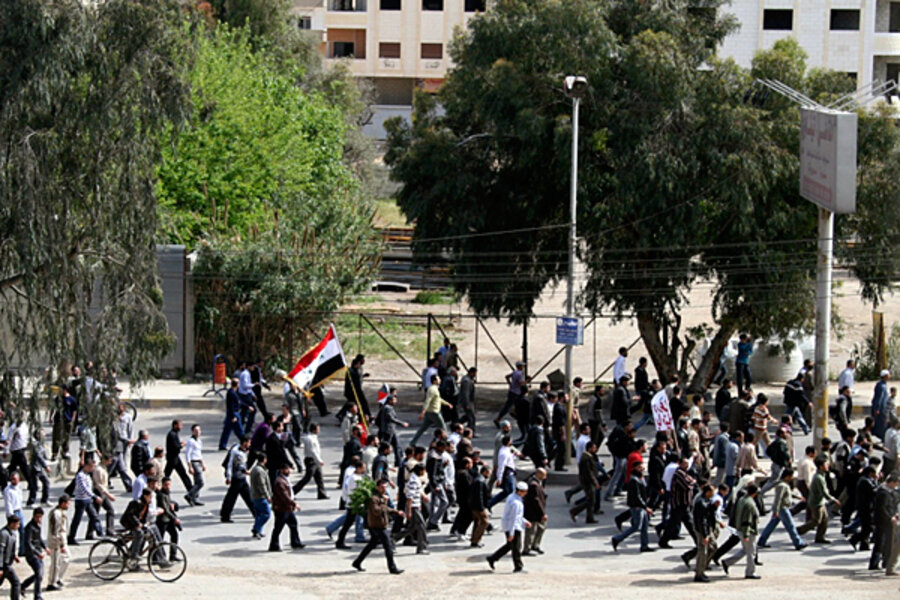Syrian protesters set sights on riskier goal: Unseating Assad
Loading...
| Beirut, Lebanon
Syrian security forces used live ammunition and tear gas to disperse crowds as tens of thousands of protestors gathered in the largest and bloodiest anti-regime protest in six weeks.
At least 49 people, including an 11-year-old boy, were killed by early evening as the regime intensified its crackdown on the nationwide protests, according to eyewitnesses and Syrian opposition activists. The heaviest toll was reportedly in the southern Daraa region, but deadly clashes also occurred around Damascus and Homs when protesters flooded into the streets after Muslim prayers.
The rallies were a well-organized and calculated sign of defiance against President Bashar al-Assad, who introduced a raft of reforms this week in an attempt to stave off the most serious unrest faced by the ruling Baath Party since it seized power nearly 50 years ago.
Think you know the Middle East? Take our geography quiz.
But the reforms, including lifting the emergency law, have come too late to dampen the resolve of the opposition. And with more than 200 people killed in the past six weeks, the protest movement has set its sights on the larger – and riskier – goal of unseating the regime.
The big question in the days ahead is whether protests will not only sustain momentum but expand to include those Syrians – and there are still many – who fear the consequences of the collapse of a regime that, while repressive, has ensured almost 50 years of relative domestic stability.
The Syrian opposition has learned well the lessons of Tunisia and Egypt, harnessing the power of social media to mobilize and direct rallies and to disseminate information to the outside world – the latter being of critical importance given the ban on foreign media from entering Syria and covering developments.
Yet a question asked by many observers – not least of all Syrians – is the identity of the opposition leadership. So far the visible opposition consists mainly of tech-savvy activists rather than hardened politicians. If the regime were to fall, who will be next to occupy the presidential palace overlooking Damascus? Presently, there appear to be no realistic candidates with the necessary cross-sectarian, ethnic, political, and cultural appeal.
Older Syrians well recall the spate of coups and counter coups in the 1940s and 1950s before the Baath Party took power in 1963, which from then on ruthlessly stamped out any signs of dissent. Few Syrians want a return to that era, particularly having witnessed bloody civil wars in neighboring Lebanon and Iraq.
Analysts say President Assad still has a chance to regain the upper hand, but time is fast running out.
Should the protests succeed, the entire geopolitical configuration of the Middle East will change. The fall of Assad would be a blow to allies Iran and Lebanese militant group Hezbollah and most likely sharpen the schism between Sunnis and Shiites.
STAY INFORMED: Sign up for our daily World Editor's Picks newsletter.





